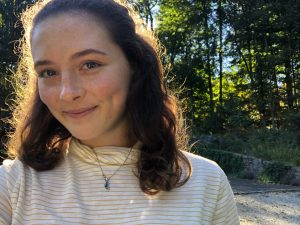VOF Reserves
Fauquier & Prince William Counties
SEE US ON SOCIAL MEDIA:
The Bull Run Mountains are the easternmost mountains in Virginia. The Virginia Outdoors Foundation’s (VOF) Bull Run Mountains Natural Area Preserve is approximately 2,350 acres that serves as a living laboratory and open-air museum in the backyard of our nation’s capital. The Preserve contains 10 different plant community types and a plethora of regionally uncommon and threatened plant and animal species. In addition to the biodiversity, this land holding permanently protects dozens of regionally important cultural history sites that tell the story of the Preserve’s diversely peopled past. In 2002, this land was dedicated by the Virginia Department of Conservation and Recreation as a Natural Area Preserve to protect the unique ecosystems and cultural resources found here. As the owner and manager of the preserve, the Virginia Outdoors Foundation is committed to protecting the mountain’s significance and sharing it with the public through managed access.
Follow us for updates and information on the Preserve’s social media sites. Click on the following links to visit each site:
The Bull Run Mountains was an early hotbed of scientific activity, and the Bull Run Mountains Natural Area Preserve continues to serve as an important site for scientific research. The permanent protection that a natural area preserve designation provides creates a relatively stable environment nestled in a dynamically changing area with ever-increasing anthropogenic pressures. As a result, the preserve is a fantastic place for long-term research and amassing large datasets. VOF staff continuously pursue research objectives and actively encourage and facilitate the research of outside organizations and institutions. The scientific potential is limitless.
Data of various types is actively collected by VOF staff and preserve volunteers, including data about plant and animal species, public visitation, and trail use. This data is crucial in making informed, objective decisions. Our data-driven approach is critical for our ability to effectively balance public use with our obligation to preserve a healthy, natural ecosystem.
With three different sections and focuses, the preserve is an active and dynamic resource. We host K-12 school groups, university students, and researchers throughout the week. Although the South Section is the only site that is open on weekends to the public without a permit, the entire preserve is actively utilized as a living laboratory, outdoor classroom, and open-air museum. Jackson Hollow and the North Section, which are accessible by permit only, serve as the engine that drives our scientific mission. Jackson Hollow houses our research station and is the home of our stream restoration area and brook trout release sites. The North Section hosts many VOF-led organized educational programs and research activities. All research and discoveries made at the preserve are incorporated into our public educational programs and outreach materials.
The first biological surveys of the mountains occurred in the 1930s when Henry A. Allard began a botanical inventory and collected over 15,000 vascular plants. His specimens now largely reside in the Smithsonian Institution – National Museum of Natural History’s herbarium. Allard was one of the first scientists to recognize the ecological uniqueness of the habitat, noting that it is more akin to the mountains that reside to the west than the surrounding lowlands.
In 1965, the federal government directed each state to create a central agency to develop long-range conservation and recreation planning. It was during this time that the Virginia Outdoor Recreation Study Commission identified Bull Run Mountains as their highest priority location for open space in Northern Virginia. Key philanthropists and neighbors began to work privately on the large scale conservation project by purchasing tracts on the mountains through the Natural Areas Council (NAC), a non-profit conservation organization.
After acquiring multiple parcels totaling nearly 3000 acres, the NAC began looking for a partner to continue the project in the early 1970s. Having always conceived of the project as being for public benefit, a public owner seemed like the natural choice to receive the properties and carry the project forward.
Established by the Code of Virginia “to promote the preservation of open-space lands and to encourage private gifts of money, securities, land or other property to preserve the natural, scenic, historic, scientific, open-space and recreational areas of the Commonwealth”, VOF is unique among state agencies in its ability to receive gifts of land and money. It is this feature that positioned VOF to acquire NAC’s properties and to carry the project forward.
VOF received the first gift of Bull Run properties in 1979 from the NAC. VOF continued to acquire land over the decades, and after close to 50 transactions assembled the contiguous blocks of land owned today. The property is appreciated, by Virginia residents and visitors alike, for its significant natural heritage, its cultural heritage, and its recreational, aesthetic and educational resources.
VOF continues to actively monitor and protect the natural and historical features of the preserve for the future. Acquisitions of Bull Run Mountains properties and conservation easements are ongoing.
The property address is 17502 Beverley Mill Drive, Broad Run, VA 20137. The parking area will be on your left about 700 feet before the main trailhead. The southern section of the preserve features 6.5 miles of trails. These trails include a range of habitats, geological character, and cultural resources. Click here for a printable map of the trails. The northern section of the preserve is open to groups by appointment only. To learn more or schedule a visit, please contact Preserve Manager Joe Villari. Note: To retain the natural conditions of preserves, facilities are limited. Preserves do not have restrooms and may have poor or no cell phone coverage. Always tell someone where you are going before you visit a preserve. Hiking trails may be steep, narrow and remote. Most are inaccessible to emergency vehicles.
Please remember this is a state-designated Natural Area Preserve. It serves as both core and corridor to native animal and plant populations. You are entering their home.
The Bull Run Mountains Natural Area Preserve features several easy to moderate trails that showcase both the ecology and history of the property. Here you will find descriptions of the trails, as well as a one-page printable trail map.
Passing through several plant communities, this trail provides an opportunity to delve into the varying natural habitat types that are found within the preserve—from the mountain laurel-covered ridges to the beautiful low-lying seeps, including the locally treasured section of habitat known as Fern Hollow. This trail is dotted with a myriad of historic features—including the upper mill and meadowlands ruins, ice house structure, Corum House, and LJ cemetery. The western portion of this trail also offers a beautiful view of the Chapman Mill and Thoroughfare Gap and provides a glimpse into the face of the natural quarry line that served as an entrenchment during the American Civil War.
Difficulty: Moderate
Length: 3.4 miles
This trail travels by historic cemeteries from two different families who called this mountain home—one being the Dawson family, the other being the Chapman family (the owners of the nearby mill). You will also pass over the natural quarry entrenchment—providing the opportunity for a closer look at this famed geological feature of historical note. The western portion of this trail also brings you through a hickory and chestnut oak-dominated ridge, this unique ecological community supports a scrubby huckleberry and lowbush blueberry underbrush.
Difficulty: Easy to Moderate
Length: 1.75 miles
Winding around this gently sloped ridge that is now populated with a young forest comprised of beech and oak, you wouldn’t know that it was historically dominated by the now endangered American chestnut tree. Today, this young forest is a great place to spy a family of white-tailed deer or hear the knocks of one of our native woodpeckers. This gentle trail has minimal changes in elevation and is a great loop for those seeking a shorter, relaxed excursion.
Difficulty: Easy
Length: 1 mile (+ .35 mile from the trailhead)
2021 Artist Fellowship (Bringing our traditional folk music back to life!)
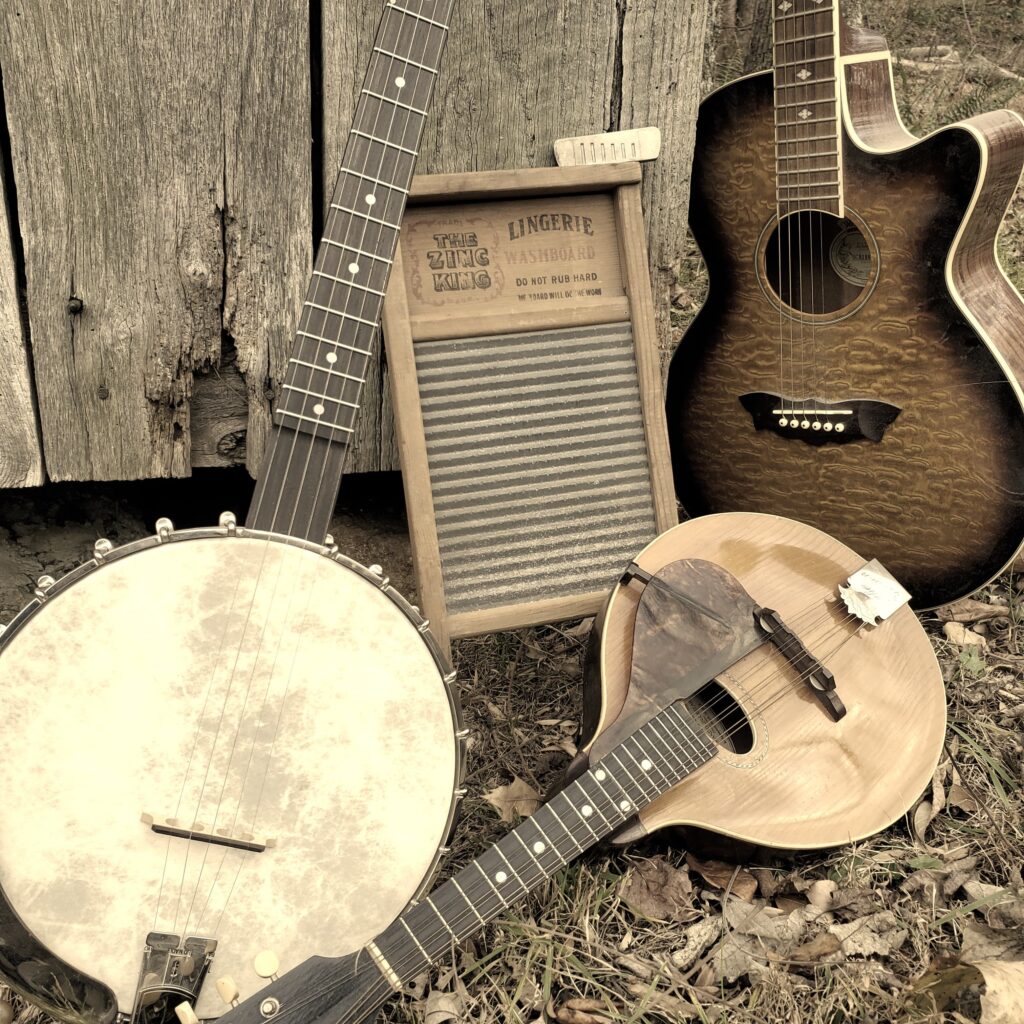
Project: Reviving the musical past of the Bull Run Mountains
Arts & Disciplines: Folk/Traditional Arts, Music/Sound, Music Composition
Theme: Music of the Mountains: Early African-American folk songs, Bluegrass, Blues, and Traditional Folk music
Fellowship Award: $5,000.00
Seeking applications from artists representing the widest range of perspectives and demographics. While we are looking for some traditional insight, we are hoping we can get some non-traditional perspectives and creative interpretations. We welcome all to apply – from students, to newly emerging talent, to well-established artists!
As the basis for this 2022 Artist Fellowship, we have lyrics recorded from within the Bull Run Mountains by a 1930’s Work Progress Administration historian Susan Morton. With historical and musical accuracy and an abundance of talent, we are looking to have applicants:
1) Traditionally recreate the four folk songs we have lyrics (but no sheet music for) utilizing historical and musical research and their talents. View lyrics here.
– Digitally record these recreate these four songs in their supposed traditional sound and then creatively reinterpret at least one or two of those songs in a modern/novel/genre bending approach. Or a unique song inspired by your time coming to know the Bull Run Mountains and its diversely peopled past. Potentially anchor these recordings in an analog format (depending upon additional interest and funding).
2) Create content for a minimum of 6 social media posts and 2 blog post that details the creative journey.
3) Perform a recorded set on-site within the heart of Virginia’s Bull Run Mountains where these songs were traditionally sung.
Update 7/21/22
Thanks to local naturalist and historian, Janis Stone, the fellow will now also have access to several more folk songs available here.
Project Background:
VOF’s Preserve at Bull Run Mountains acts as the conservation spine of the eastern most mountain range within the Commonwealth of Virginia. Bull Run Mountains Natural Area Preserve protects 2,500 acres that is surrounded by an additional 5,700 acres of land protected from development – in the form of conservation easements held on private land. Given this , it is surprising to some that this mountain held such a diversely peopled past.
Many marginalized peoples historically viewed these mountains as a sort of societal sanctuary. Historic mill operations and the economic gains that accompany them, anchored each end of the Bull Run Mountains. It was the ridges and hollows in between that provided respite to those who found themselves economically disadvantaged, or otherwise outside of the prevailing mainstream society of the time.
There are tales of First Nations People who escaped the “Trail of Tears” by hiding within the Bull Run Mountains. Other tales tell the story of enslaved peoples who found freedom through Underground Railroad routes that cut right through this mountain range. Both, pre-American Civil War “free Blacks” and post-Emancipation African-Americans, owned land, made lives, and raised families here.
As much as this landscape provided life, it often proved to be a challenging one, and people began to leave this mountains’ rugged landscape when presented with greater opportunity. As a result, human habitation began to dwindle by the 1940s, leaving behind dozens of cultural history ruins (homesteads and cemeteries), countless artifacts, folklore, stories – and in a few remarkable cases, song.
This Fellowship is intended to help us bring this mountains’ rich history back to vivid life and tell the stories of the people who made their life here. Creating a new avenue of connection of to this place and our VOF Preserve’s Making History Our-story initiative.
Site Background
The Bull Run Mountains are the easternmost mountains in Virginia. The Virginia Outdoors Foundation owns and operates a 2,350 acre preserve that sits just 35 miles outside of our nation’s capital. Before becoming a state-designated Natural Area Preserve and being managed as an open-air museum and living laboratory, this mountainous landholding was home to many marginalized peoples. For the past three years, staff of the Preserve have been researching and presenting the historical narrative of the Preserve in honest, open, and empowering ways.
Long-term housing will not be offered during this fellowship, as work can be done mostly remotely and we don’t want to limit ourself by proximity alone, but at least two visits (and free stays at our VOF Research Outpost located within the heart of VOF’s Preserve at Bull Run Mountains) will be requested, as we want an individual who wants to connect to this place and our history. So while this fellowship is open to applicants everywhere, this project unfortunately cannot be completed entirely remotely without advanced approval of extenuating circumstances.
Application Requirements
To apply, please reach out to our VOF Preserve Manager, Joe Villari, at jvillari@vof.org
Please include in your application:
– A short bio (and CV if available).
– If a musical group, please list all individuals names and their role in this project.
– At least 2 samples of your work, but ideally a full portfolio of past work.
– A brief proposal is preferred. One that describes your intended approach to this fellowship project (max one page). This should include a short description of why you would be the best fit for this project, what materials you would need (if any) to complete it, and the realistic timeline anticipated for this project.
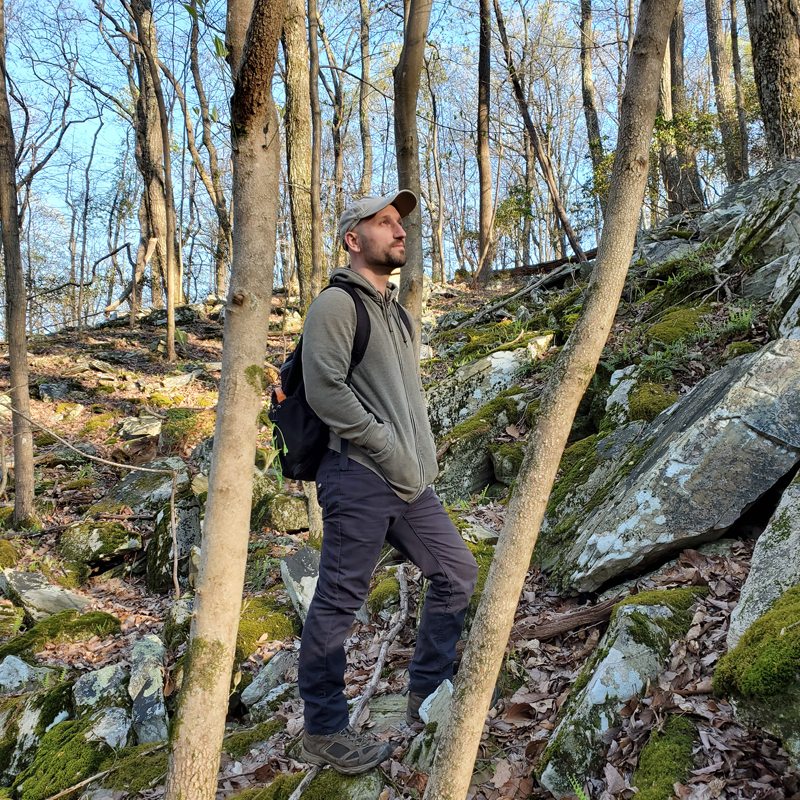 | Joe Villari Preserve Manager jvillari@vof.org 844-863-9800 x460 |
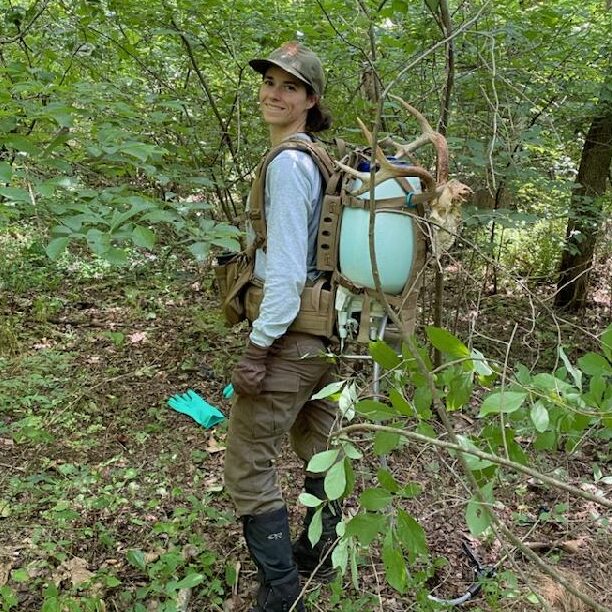 | Deneith Reif Conservation Assistant dreif@vof.org 844-863-9800 x395 |
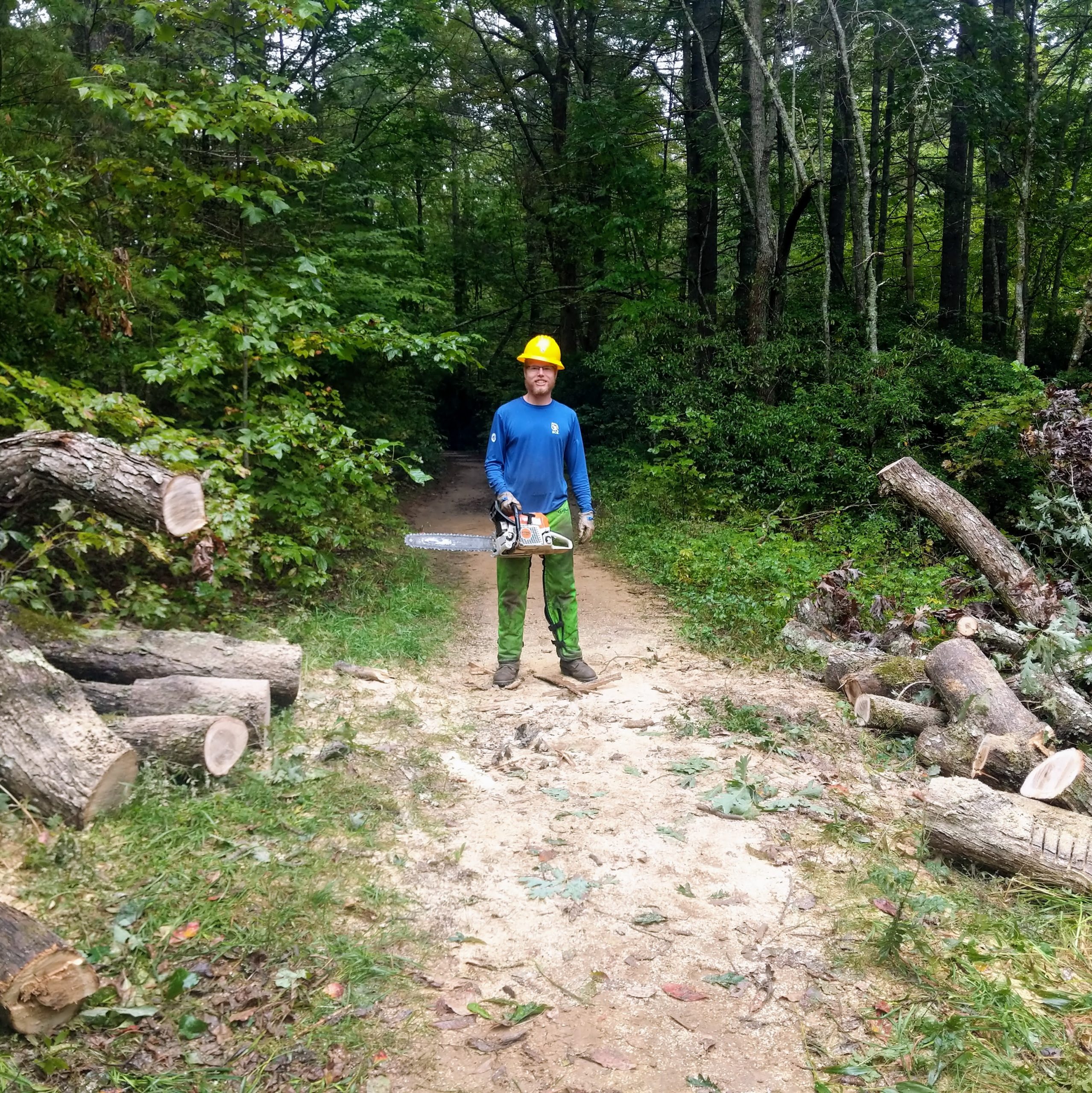 | John Lenox Conservation Assistant jlenox@vof.org 844-863-9800 x235 |
Below is a selection of publications published by VOF and our partners related to our work at the Bull Run Mountains Natural Area Preserve.
Insect Biodiversity of the Preserve at Bull Run Mountains
Insect Biodiversity of Bull Run Mountains Natural Area Preserve, A Pictorial Guide: Examples of Taxa
The Jack Dawson Project: 2020 Inventory Report
Black and African American History of the Bull Run Mountains
In partnership with the Virginia Department of Conservation and Recreation:
Upcoming Opportunities
Now welcoming applications for our 2023 Artistic Fellow (Bringing our Traditional Folk Music Back to Life)

Current Fellow(s)
2021-2022
Lauren Fuchs (Natural Science)
For the 2021-2022 field season, the Preserve welcomes Lauren Fuchs as our next Natural Science fellow. Read all about her ongoing work on the susceptibility of our local snake population to the Ophidiomyces ophiodiicola (Oo) pathogen here. 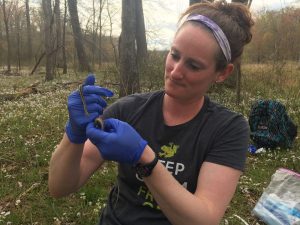
2020-2021
Barinaale Dube (Cultural History)
Barinaale Dube, recent graduate of Howard University with degrees in economics and Africana studies, sifted through archival records to produce a cohesive narrative of Black and African American history on the Bull Run Mountains. Her final fellowship report is coming soon!
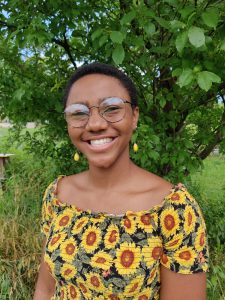
Meredith Hart (Natural Science)
Meredith Hart collected insects from all over the Preserve’s Jackson Hollow and North sections to create a report on the insect biodiversity of the Preserve at Bull Run Mountains. Read about her project and check out the final report here.
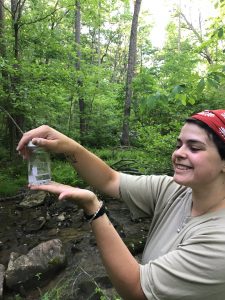
Miguel Montalvo (Special Projects)
Talented photographer Miguel Montalvo has taken photos all over the world. We were overjoyed to have him visually document the Jack Dawson homestead project. See his evocative photos in Kellen Hope’s fellowship report here.
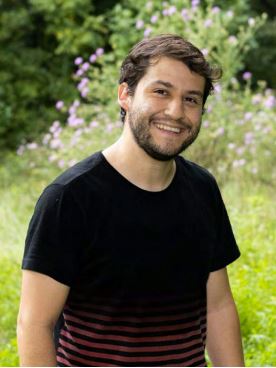
Kellen Hope (Special Projects)
Kellen Hope put her skills as a collections manager to good use by cataloguing the unique collection of artifacts left behind in Jack Dawson’s homestead. Read all about the project and see the final report here!
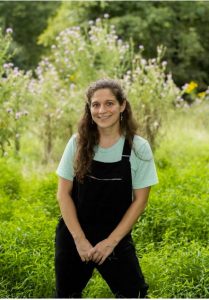
Annie Mickum (Folk History)
Anne Mickum collected interviews, photos, and other information to weave together the uniquely Bull Run story of Jack Dawson. Read about her approach here.
